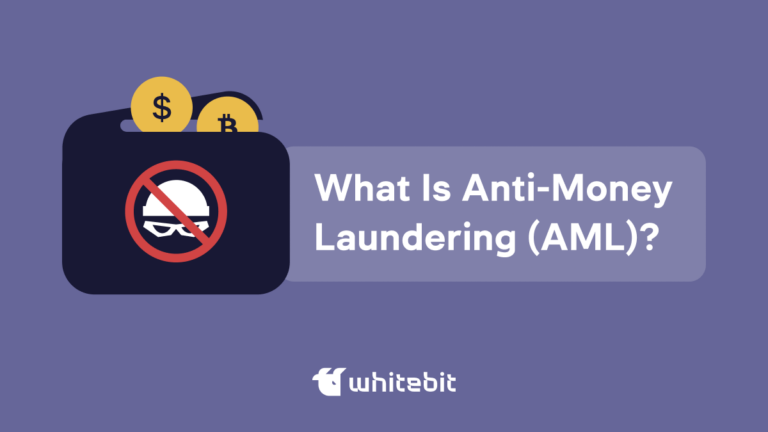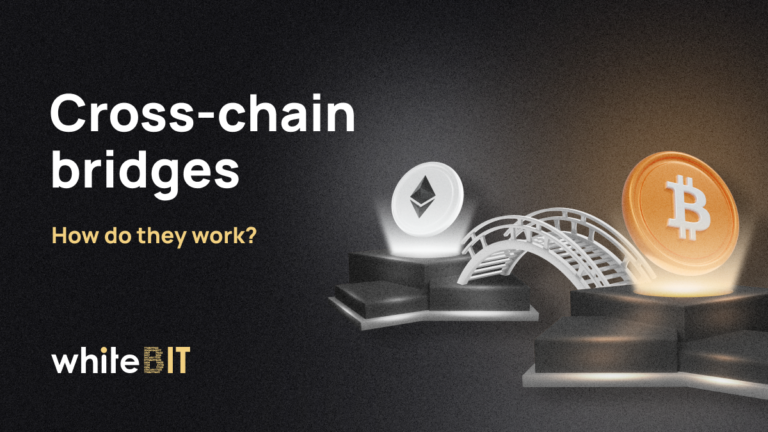What Are the Different Types of Cryptocurrency?

Content
For most people, the word “cryptocurrency” is associated with Bitcoin, the first cryptocurrency that laid the foundation for the development of the entire market. Its emergence triggered a great interest in blockchain technology. Developers and entrepreneurs started creating new cryptocurrencies, each offering improvements and innovations. Today, the cryptocurrency world counts tens of thousands of cryptocurrencies: altcoins, tokens, stablecoins, etc. But what are these cryptocurrencies? Let’s take a closer look at the cryptocurrency types and their differences.
The Main Types of Cryptocurrency
In 2008, Satoshi Nakamoto introduced the concept of a decentralized digital currency independent of central banks or government institutions. This was a revolutionary step in the financial industry. Vitalik Buterin continued the innovation path and, in 2015, introduced Ethereum to the world — a cryptocurrency and a platform for creating decentralized applications (dapp) based on smart contracts. Thanks to Ethereum and the introduction of the ERC-20 standard, the world of cryptocurrencies has seen the emergence of many new kinds of tokens, different cryptocurrencies serving different purposes within the blockchain ecosystem. Since then, Ethereum has had the second-largest market capitalization among cryptocurrencies. The types of crypto and their value reflect the dynamic development of the digital economy and investor interest in the sector. Some key categories of tokens are implemented on the Ethereum platform: utility tokens, security tokens, stablecoins, NFTs, and management tokens.
Bitcoin
In response to the financial crisis of 2007-2008, Satoshi Nakamoto proposed Bitcoin as a decentralized digital currency. This currency is protected from government intervention and manipulation through cryptography, which ensures transparency and equality for all participants in the network. Thanks to its peer-to-peer (P2P) structure, Bitcoin allows transactions to occur directly between users, bypassing financial intermediaries. Bitcoin’s innovative approach has given rise to new cryptocurrencies. Let’s discover what types of cryptocurrency are there.
Altcoins
Altcoins emerged after Bitcoin, designed to expand its capabilities and offer innovations. They can differ from Bitcoin in many ways, from the speed of transactions to the consensus algorithms used, such as Proof of Work (PoW) or Proof of Stake (PoS).
Examples of well-known altcoins:
- Ethereum (ETH) ranks first among the most famous and widely used altcoins. Ethereum is a decentralized platform that allows smart contracts and decentralized applications (dapps) to be created and run, ensuring they operate without the risk of censorship, fraud, or any third-party interference;
- Ripple (XRP): Ripple is both a payment system technology and a cryptocurrency designed to speed up and reduce the cost of international payments. Unlike most other cryptocurrencies, Ripple actively partners with traditional financial institutions to provide them with a fast and efficient means of making international transfers;
- Litecoin (LTC): If Bitcoin is called “digital gold,” Litecoin is “silver.” Litecoin is one of the first altcoins based on Bitcoin code, with modifications to speed up block processing times.
Have you ever wondered how many types of cryptocurrencies there are? Delve into different types of crypto assets.
Token
Many people confuse tokens with coins, thinking they are synonymous. However, despite the similarities, there are fundamental differences between the two. Coins function on their blockchains, while tokens are created on existing blockchains.
For example, Ethereum is a coin that operates on its blockchain, while ARB is an ERC-20 token on the Ethereum blockchain. To thoroughly understand the differences between coins and tokens, it is essential to consider their technical structure and platform and their economic, functional, and legal role in the cryptocurrency ecosystem.
Coins generally serve as a medium of exchange, a unit of account, and a means of storing value within their blockchains. They are the foundation for executing transactions and user interaction within the network. Unlike coins, tokens can perform more specialized functions, such as representing assets, project participation rights, or access to certain services. Developing your coin involves inventing and maintaining a unique blockchain, which is technically complex and resource-intensive compared to creating tokens. Knowing all forms of cryptocurrency available today is essential to understand the market fully.
Stablecoins
Stablecoins are a type of cryptocurrency whose value is attached to the value of another asset, such as fiat money, precious metals, or securities, at a one-to-one ratio. These tokens help traders quickly convert assets into stable currency during market volatility. Cryptocurrencies’ crypto rates reflect their stability so that entrepreneurs can settle accounts with a steady exchange rate without the involvement of banks. Unlike fiat currencies, stablecoins can be sent and received quickly and profitably anywhere in the world. USDT and USDC are the most popular steblecoins. USDT alone has a capitalization of $98 billion.
Security tokens
Among all types of cryptocurrency, security tokens serve as a digital representation of traditional financial instruments on the blockchain, such as shares in a company, stocks, and bonds. These tokens effectively act as digital securities. Their issuance is subject to strict regulation, ensuring compliance with securities laws and increasing investors’ trust and security. Through blockchain technology, the management of these assets becomes more transparent and efficient, minimizing bureaucracy and providing investors with improved access to global markets and increased investment liquidity. The process of initial offering of these tokens is called Security Token Offering (STO).
Utility tokens
Utility tokens provide users access to specific services or functions within a blockchain project or platform. Unlike security tokens, which function as investment instruments and grant rights to share in profits or management, utility tokens carry practical value by allowing interaction with services or applications.
Such tokens can cover various aspects, including paying for access to network resources, utilizing platform-specific features – such as voting or triggering smart contracts – and serving as an internal currency for transactions within the ecosystem. Service tokens incentivize economic activity within a project, helping to sustain and grow it. One example of a service token, Filecoin (FIL), is used to purchase storage space or reward the provision of available disk space.
Governance tokens
Governance tokens provide their holders with a unique opportunity to participate in blockchain project governance actively. This includes having a say in critical decisions, making suggestions for project development and modifications, and participating in discussions about new initiatives. This mechanism enables the creation of fully decentralized and self-managed ecosystems where decisions are made collectively rather than centrally.
Governance tokens are widely used in decentralized finance and gaming platforms like GameFi. This not only allows participants to influence the future of a project but also contributes to a more open, transparent, and fair environment for all its users.
Non-Fungible Tokens (NFTs)
NFT is a unique digital asset created based on blockchain technology. The distinctive feature of NFT is its uniqueness. Unlike fungible tokens such as Bitcoin or Ethereum, it cannot be divided and sold piecemeal. NFTs are created through smart contracts on various blockchain platforms, including Ethereum, Solana, NEAR, Polkadot, etc. Each NFT contains blockchain information and metadata: media file, description, Content ID, and JSON. This makes it impossible to duplicate or counterfeit a token.
For many people, NFTs are digital images sold on specialized
platforms. However, NFT encompasses other digital assets, such as music tracks and albums, videos, digital collectibles, virtual real estate and meta-universe items, avatar clothing and accessories, unique domain names, and even literary works.
Privacy Coins
Private coins, such as Monero (XMR), are designed to provide anonymity and privacy for transactions. Monero uses sophisticated cryptographic techniques, including ring signatures and hidden addresses, to hide sender and recipient identifiers and transaction amounts. This makes Monero an ideal choice for users who value the privacy of their financial transactions above all else. Unlike many other cryptocurrencies, where transactions can be tracked and viewed publicly, Monero provides a high level of anonymity, making it virtually impossible to track the flow of funds within the network. Cryptocurrency charts such as Monero reflect market dynamics and increased interest in anonymity among market participants.
Central Bank Digital Currencies (CBDCs)
Central bank digital currencies are the digital counterpart of fiat currencies issued and regulated by countries’ central banks. Unlike decentralized cryptocurrencies, CBDCs are under the complete control of national financial institutions, ensuring their stability and official recognition as legal tender. These currencies offer benefits, including improved payment system efficiency and anti-money laundering.
Examples of CBDCs, such as the digital yuan in China and the digital euro from the European Central Bank, demonstrate a commitment to integrating digital currencies into existing financial infrastructure, ensuring reliability, security, and ease of use. Unlike cryptocurrencies, central bank digital currencies have government-backed stability and allow regulators to effectively oversee and control transactions, making them less susceptible to market fluctuations and increasing investor confidence.
Decentralized Finance (DeFi) Coins
To understand how DeFi works, one must realize that a DeFi coin is not just a cryptocurrency or speculation token. It is the key to actively participating in an ecosystem of decentralized finance, including decentralized exchanges such as WhiteSwap, liquidity pools, staking, farming, lending, and NFT. These tools allow users to manage assets without turning to traditional financial institutions. Thinking about the many crypto types worldwide, one can appreciate the scale and dynamics of blockchain technology.
Conclusion
Innovation creates unlimited opportunities to transform traditional financial and economic systems. The diversity of digital assets opens new horizons for optimizing transactions, asset management, and implementing innovative projects. In this context, it is essential to understand what cryptocurrencies and altcoins are, as they represent key elements in the blockchain ecosystem, empowering Bitcoin. However, market participants face challenges related to regulation, security, and recognition of cryptocurrencies along with the opportunities. The journey towards deeper integration of cryptocurrencies into the global economy requires a willingness from all stakeholders to learn and adapt. We are facing an era in which the boundaries between traditional finance and blockchain technology are blurring, heralding the birth of a more accessible and efficient financial system. Continue to explore the diverse ecosystem of blockchain technology by understanding the different types of crypto tokens.











